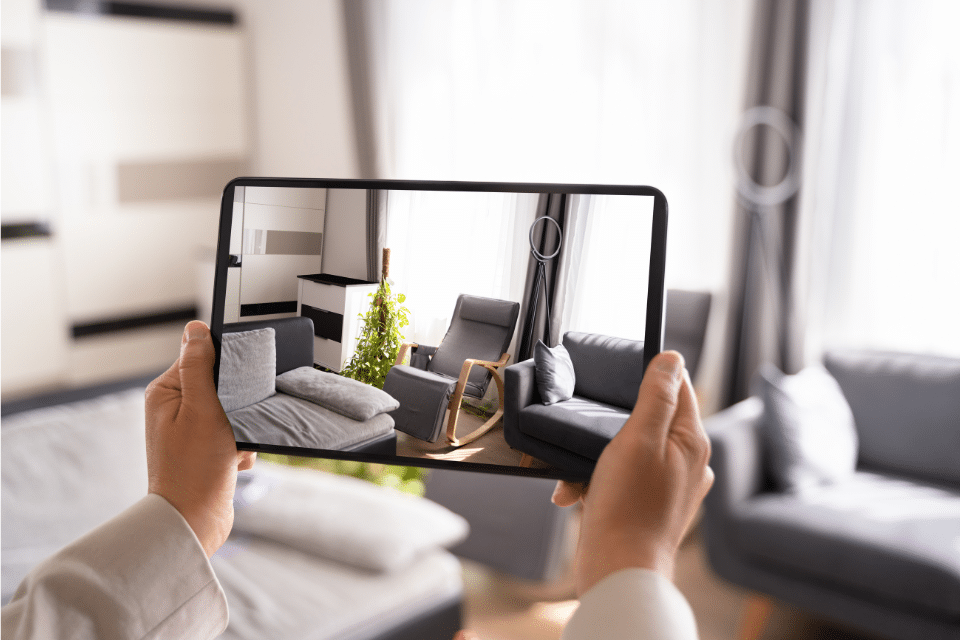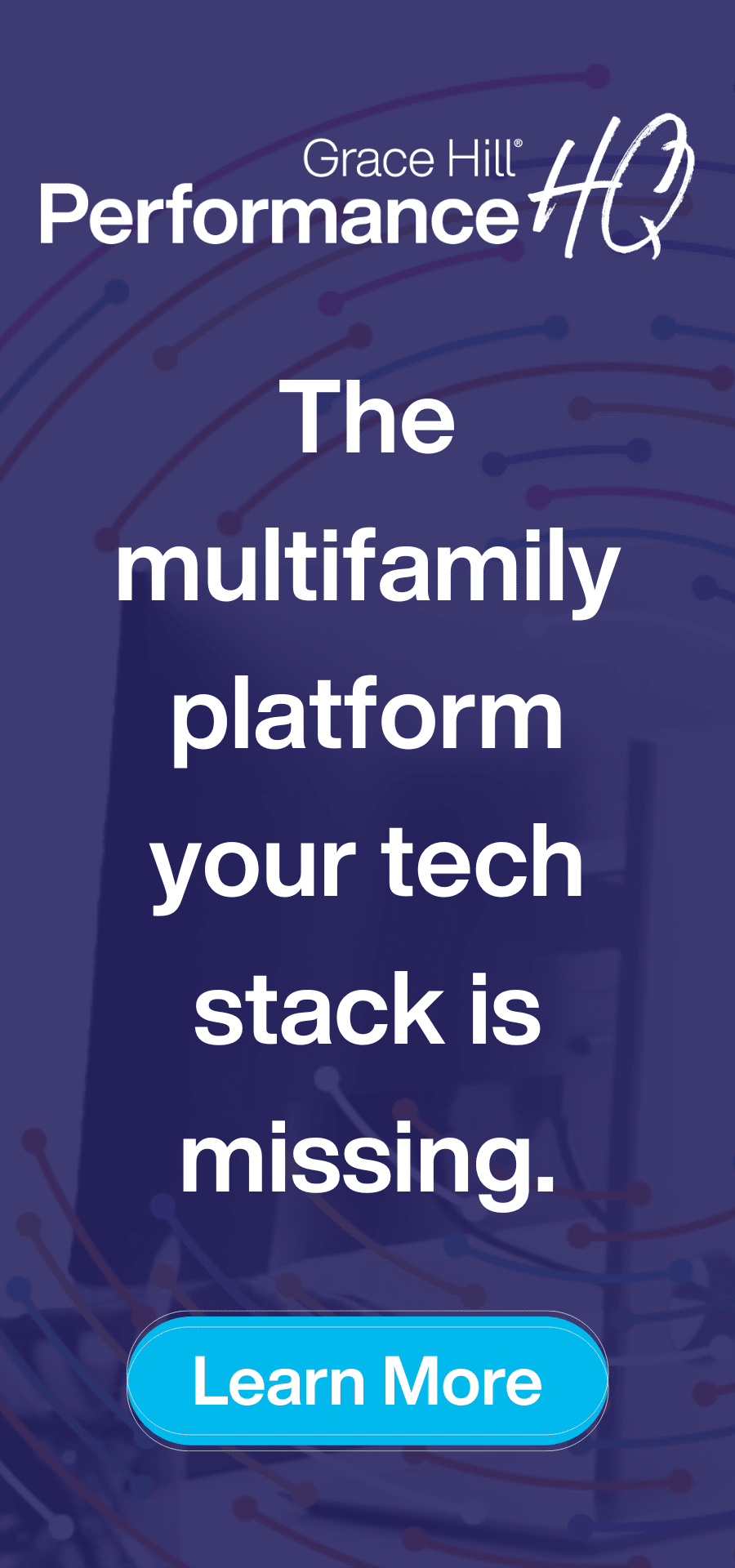Virtual apartment tours and virtual leasing have become essential tools for leasing agents, yet they serve distinct purposes within the leasing journey. Understanding the differences between these two approaches can help agents craft a more efficient, customer-centered experience.
Virtual tours provide a digital walkthrough of the property, allowing prospective renters to explore layouts, amenities, and the overall feel of the space from any location. However, virtual leasing goes beyond showcasing the property, enabling the complete leasing process to be conducted online.
Together, these tools streamline the renter’s experience and empower agents to convert interest into signed leases more efficiently. In this blog, we’ll cover three easy ways to ensure your virtual apartment tours are converting to sales.
Jump to a Section
- Virtual Apartment Tours vs. Virtual Leasing
- 3 Strategies To Create Virtual Apartment Tours That Convert to Sales
- The Time Is Now To Optimize Your Virtual Apartment Tours
Virtual Apartment Tours vs. Virtual Leasing: The Difference Matters
Before we dive into how virtual leasing sets the stage for sales success, it’s essential to first understand the difference between virtual apartment tours and virtual leasing. They are NOT the same thing; they represent distinct aspects of the leasing process, each with unique benefits. Understanding the difference between the two can be especially important for leasing agents aiming to streamline their workflows and offer an enhanced experience to prospective renters.
Virtual Tours
Virtual Tours are online, interactive property walkthroughs designed to give potential renters a clear sense of a unit’s layout, amenities, and overall vibe. These tours can take various forms, from 360-degree photos and video tours to fully immersive 3D experiences.
Virtual tours make it easy for renters to explore a property from anywhere, allowing them to visualize the space before they step foot on the property. For leasing agents, providing virtual apartment tours is a way to engage interested renters early, helping them understand if the unit fits their needs and lifestyle, saving time for both parties in the selection process.
Virtual Leasing
Virtual Leasing, on the other hand, goes a step beyond showcasing the property by providing a fully digital platform for the leasing process itself. From applications and credit checks to lease signings and payment setups, virtual leasing enables renters to complete all aspects of the leasing process online.
This approach not only offers convenience but also allows leasing agents to manage applications, communicate with prospects, and finalize leases without face-to-face interactions. Virtual leasing is especially beneficial in today’s fast-paced, remote-friendly world, enabling agents to move leads smoothly through the pipeline and allowing renters to secure units quickly and efficiently.
To sum it up, virtual apartment tours introduce a property; virtual leasing completes the deal. Together, they provide a comprehensive digital leasing experience that meets the demands of modern renters and makes life easier for busy leasing agents.
Now that you understand the difference between virtual tours and virtual leasing, let’s dive in and discuss three important things you can do to set your virtual apartment tours up for success!
Do These 3 Things To Create Virtual Apartment Tours That Convert to Sales
For leasing agents, optimizing virtual tours to drive conversions requires a mix of strategic planning, engaging content, and follow-up tactics. Here are three essential steps to enhance the impact of your virtual apartment tours and boost leasing success:
1. Showcase Key Selling Points Clearly and Concisely
Effective virtual apartment tours should highlight the property’s most attractive features in a way that resonates with potential renters. Leasing agents should focus on the aspects that are likely to matter most — spacious layouts, updated appliances, high-end finishes, natural lighting, and any unique amenities, such as a fitness center or pet-friendly spaces. It’s helpful to consider the property’s target audience and tailor the tour to emphasize what they’ll find most appealing, keeping the tour length manageable to hold viewers’ attention. It’s recommended to keep virtual tours between 90 seconds to two minutes, according to Realync, a multifamily-specific virtual touring app.
Grace Hill Expands Its Innovation With the Acquisition of Realync
In addition to showcasing these high-demand features, leasing agents can further enhance virtual tours by using strategic framing and pacing to make the property feel spacious and inviting. For example, wide-angle shots can capture the full scope of each room, giving prospective renters a sense of scale and flow. Pausing momentarily in key areas, such as a sunlit living room or a newly remodeled kitchen, allows viewers to take in the details that make the space special.
For properties with unique or flexible layouts, it can be effective to highlight how different areas can be used, such as demonstrating a nook that could double as a workspace or a dining area that opens seamlessly onto a balcony.
By thoughtfully curating each shot, leasing agents can guide viewers through a realistic experience of the property, making it easy for them to imagine living there and strengthening their emotional connection to the space.
2. Provide Engaging Narration and Personalized Insights
Narration during virtual apartment tours can add depth to the experience, giving prospective renters a sense of connection with the space and the agent. A leasing agent’s voiceover can provide context for each area, describe how the space can be used, and offer personal insights or tips that make the property feel like home.
For example, take Kiya Ruggeberg, a leasing agent turned assistant manager at Trilogy. Known for her personal touch in virtual tours, Kiya uses Realync, a Grace Hill solution, to quickly create tours on her own, complete with voiceovers.
Agents can follow Kiya’s lead and also mention nearby attractions or popular local amenities, connecting the property to the broader neighborhood. This added context can make the space more memorable and help prospective renters envision living there, which can be a powerful motivator in the decision-making process.
Adding a personal touch to the narration can also build trust and rapport, making renters feel more comfortable and confident about renting at your property. Sharing relatable details about how the space can enhance daily life encourages renters to emotionally invest in the unit, seeing it as more than just a set of rooms. But don’t just take our word for it. Kiya confirms, “Personalized video tours have helped me build stronger relationships with both prospects and renters.”
Additionally, by addressing common questions during the tour — such as storage options, parking availability, or community features — agents can proactively address concerns that might otherwise delay a renter’s decision. This informative, friendly approach can set the tone for a smooth, engaging leasing process and leave renters feeling well-informed and excited to take the next steps.
3. Offer Seamless Follow-Up Options and Virtual Leasing Support
To keep leads engaged after the tour, leasing agents should ensure there’s a clear and immediate path for follow-up. This could mean adding clickable links within the video for scheduling in-person tours, applying online, or chatting with an agent in real time. In fact, the Realync platform enables leasing teams to add a call-to-action banner at the top of their virtual tours.
Making it easy for viewers to take the next step minimizes the friction between the initial interest and final commitment. Additionally, offering virtual leasing options — like digital applications and lease signings — allows prospects to complete the process online, making it easier for them to commit without delays.
A seamless follow-up process can be further enhanced by incorporating personalized, timely follow-up communications. After a virtual tour, leasing agents can use automated email or SMS systems to send tailored messages that recap the property’s features and answer any questions the prospective renter may have raised during the tour.
However, if leasing agents struggle to get a response via a plain email or SMS, consider sending a video follow-up. Leigh Lyman, a leasing and marketing associate with JVM Realty, used this tactic with the Realync platform to keep her property top of mind for prospects after a tour.
Leigh shared, “My prospects wouldn’t respond to my emails. So I had this idea of sending them follow-up emails with videos to give them a ‘sneak peek’ of their potential floorplans again.” Her outcome? Leigh’s prospects responded, with four of them signing leases in the same week.
Providing relevant information, such as available move-in dates, current lease specials, or nearby amenities, demonstrates attentiveness and helps build rapport. For prospects who show interest, leasing agents can offer live virtual meetings or one-on-one video calls to address any specific concerns and guide them through the leasing process.
By focusing on these elements, leasing agents can create an engaging and effective virtual apartment tour process that not only showcases the property well but also drives renters toward conversion.
The Time Is Now To Optimize Your Virtual Apartment Tours
Incorporating a compelling virtual tour process can transform a renter’s journey. By carefully crafting virtual tours that highlight key features, providing personalized narration, and offering seamless follow-up options, leasing agents can create a memorable, engaging experience that builds a genuine connection between prospective renters and the property.
Ready to optimize your virtual tour process and drive more conversions? Talk to our team today to hear more about Realync and make sure your virtual apartment tours stand out, keep leads engaged, and close more leases efficiently!


 Customer Support
Customer Support




